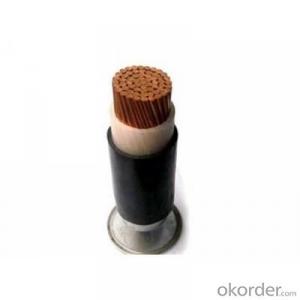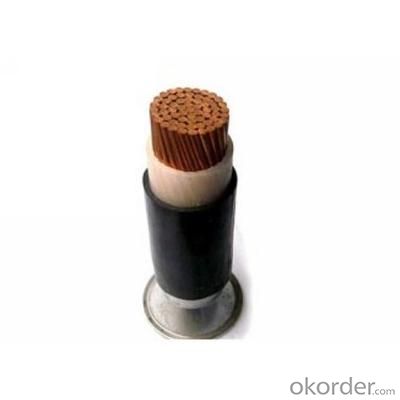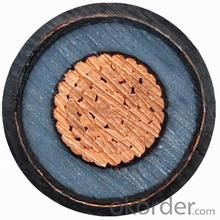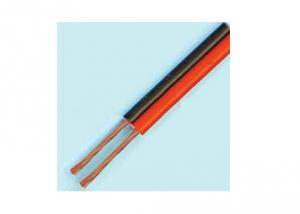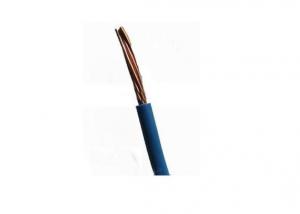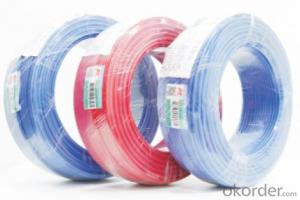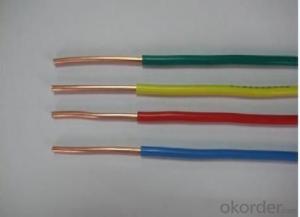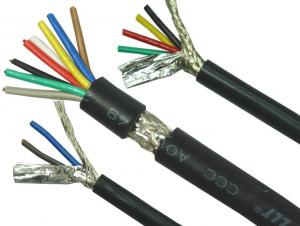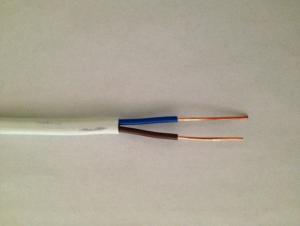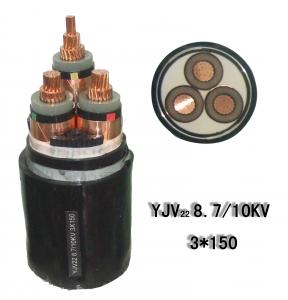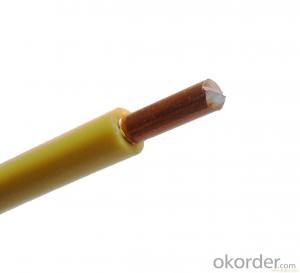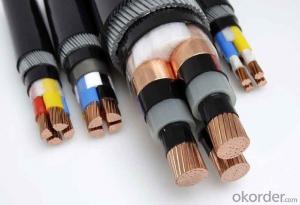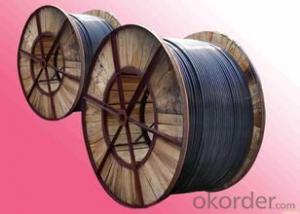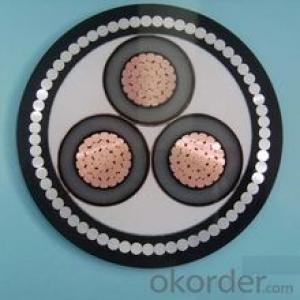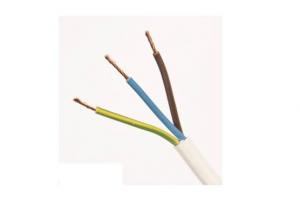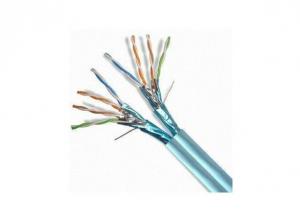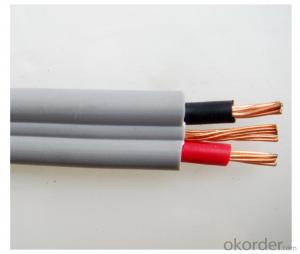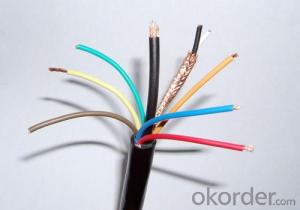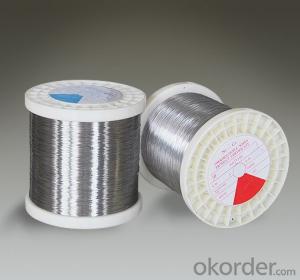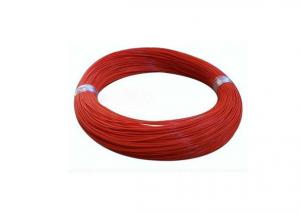CU/PVC/SWA/PVC Single core Electric Cable 0.6/1kV
- Loading Port:
- China main port
- Payment Terms:
- TT OR LC
- Min Order Qty:
- 500 m
- Supply Capability:
- 50000 m/month
OKorder Service Pledge
OKorder Financial Service
You Might Also Like
CU/PVC/SWA/PVC Single core Electric Cable 0.6/1kV
Rated Voltage 6kV and 30kV power cable (XLPE insulated),6kV-30kV
Cross-sectional area : single core,three-core 25-630mm2
Copper ,aluminum conductor, metal tape armoured,wire armoured.
Rated Voltage 30kV power cable (XLPE insulated), 21/35kV,26/35kV,
Cross-sectional area : single core,three-core 25-630mm2
Power cable Structure
The basic structure of power cables by the core (conductor), an insulating layer, a shielding layer and a protective layer of four parts.
1. The core is conductive part of power cable, which is used to transfer power, is the main part of the power cable.
2. Insulation is the line between the core and the earth and the different phase of wire core in the electrical insulated from each other, is an indispensable part in the structure of power cable.
3. Shield 10KV power cable shielding layer and more generally have a conductor shielding layer and an insulating shielding layer.
4. Protective layer The role of the protective layer is to protect the power cable from the outside world the invasion of the impurities and moisture, and prevent the external force directly damage the power cable.
Specifications:
Type | Core | Rated voltage(kV) | ||||||||
Copper | Aluminum | 0.6/1 | 3.6/6 | 6/6 | 8.7/10 | 12/20 | 18/20 | 21/35 | 26/35 | |
YJV | YJLV | 1 | 1.5~400 | 25~500 | 25~500 | 25~500 | 35~500 | 50~500 | 50~500 | 50~500 |
3 | 1.5~300 | 25~300 | 25~300 | 25~300 | 35~300 | 50~300 | 50~300 | 50~300 | ||
2 | 1.5~150 | - | - | - | - | - | - | - | ||
3+1 | 4~400 | - | - | - | - | - | - | - | ||
3+2,4+1 | 50~240 | - | - | - | - | - | - | - | ||
5 | 1.5~35 | - | - | - | - | - | - | - | ||
YJV22 | YJLV22 | 1 | 4~400 | 25~500 | 25~500 | 25~500 | 35~500 | 50~500 | 50~500 | 50~500 |
3 | 2.5~300 | 25~300 | 25~300 | 25~300 | 35~300 | 50~300 | 50~300 | 50~300 | ||
2 | 4~150 | - | - | - | - | - | - | - | ||
3+1 | 4~300 | - | - | - | - | - | - | - | ||
3+2,4+1 | 50~240 | - | - | - | - | - | - | - | ||
5 | 2.5~35 | - | - | - | - | - | - | - | ||
Note: We can produce steel-armored wire according to user needs, such as: YJV32, YJLV32 type; the flame retardant cable should plus “ZR” in front of the original model when ordering.
Hot spot! Factory High quality Low voltage electric power cable
Certificates
CE, RoHS, CCC, KEMA and more others at request
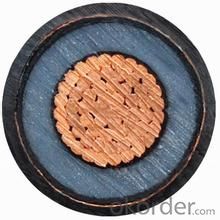
- Q: Hey! Im trying to fix a rental property i have and this is the first time ive done any work to it. When i arrived the hallway light was not working. It has a switch at each side of the hall. It has White/Black/Red wires. I tried installing a new light and without touching the wires i tried to install it off the white/Black wires and i couldnt recieve power. I tried messing around and cant seem to figure it out. Is the red wire needed for a simple hallway light? What is it there for? . also maybe related in one of the bedrooms i have an elec outlet plug i replaced and worked for about a day Then randomly it stopped working and i checked the wire connection to the plug and they seem fine. i also tried a new outlet plug to see if that was the problem (it wasnt) what could be the problem it is the only outlet in the room that doesnt work. Thanks!!
- Indestructible okorder
- Q: I have an unused electrical plug outlet that I want to tie into and run 110v to the barn. The plug outlet is 72 feet from the circuit breaker then from the plug outlet to the barn is another 70 feet or so. Is that too long a run or is it within specs?Thanks
- Danny is right, if all your doing is putting up some lights you could use an extension cord if you wanted. The point here is low voltage will only mean your bulbs will be dim, however, some fluorescents may not light if the voltage is too low. If you are ever going to power a saw or any other tool from the barn, a 30 amp sub-panel would be ideal. Low voltage will damage electric motors.
- Q: I know it sounds weird but I like to do little projects here and there with any loose electrical stuff I have. you know. takes apart electronics I don't use and try to make a fun little project out of making something new and useful. And it happens that I have a large supply of unneeded ethernet and phone cables and I am ussually very good with this kind of stuff. but this has me stumped. O.o Can these wires be used at electrical wiring in a simple or complex circuit? I mean it makes sense. but I don't want to waste time and not have it work as I've never used them like that before.
- Yes and it is a very good idea for SMALL electrical prodjects. What you need to do is clip the 2 ends of the ethernet cord and throw them away. Then you need to strip the rubber case that is on the outside of the cables. Its about 1 MM thick so be careful. Use like a scissors and make a little shallow cuts around the cord (O and by the way we are stripping the case of the real cords right now). Do this every foot or two and pull the rubber case off. There should be many little cords in there called CAT 5. Take two of those cords out and strip the ends of them and you have two perfectly good cords to work with (you can use the other cords as well of course). Thats pretty much all you have to do. Hope this helps!
- Q: 1007 wire and 1015 wire What is the difference
- after the line to finish, then just put the module up, forced to beat, so that it is close to the patch panel
- Q: I had a space heater on in a bedroom. I know, dumb idea, but it was plugged in to a power strip, which was plugged into a standard outlet. It was on for about 30 minutes. Then, it just shut off. I thought nothing of it, but when i unplugged the heater and later tried to plug other things into the power strip, the light on the power strip was on (the one that is always on if the strip is getting power), but nothing plugged in would work, even after resetting it. My house s circuit breaker did not trip. After unplugging the power strip, the outlet still works if I plug somethig in. This is probably insanely paranoid of me, but could this cause damage to my home s electrical wiring? Could this cause an electrical fire after everything has been unplugged?Thank you.
- Don't use power strips with space heaters. I think you burned out the power strip, somehow. Maybe the built-in circuit breaker failed while tripping. It's very unlikely, verging on impossible, that your house wiring was damaged in this event.
- Q: Hi, I am wiring my new addition. My question has to do with the wiring. I have recepticals in opposite corners of the room. Should I drill holes into each stud around the room to run the wire? Or am I better off drilling a hole into the top plate, and running the wire across the attic, drilling a hole into the opposite top plate, and down to the second receptical??Thanks for your timepb4sc
- IMO, okorder
- Q: Can two wires be connected directly like wires?
- It is best not to connect, if it is connected, you can use the network module, the two lines connected, just like from the wall of the network panel to connect the same network cable. Do not exceed 100M.
- Q: What is the difference between summer and winter? why? If you set up a wire in the summer should pay attention to what
- The general line is green and yellow flower line red or blue or black and white with the line This situation can not be determined to observe the line number of the thickness of the general socket fine for the ground if you want to be a single case can only look at the wiring
- Q: i figured because you need to use bigger thicker wire for low voltage , and thinner wire for high voltage. Therefore , you can save wire by using high voltage. I just need someone to confirm this.
- Yes Power Voltage* Current Power lost Current^2 * resistance of wire. So if you raise voltage, and lower current you can deliver more power to the destination (lose less power on the line). Or you can use adjust the thickness of the wire to achieve desired results. Note, for very high voltage, you need to take into account the skin effect, in which the electricity is conducted primarily along the outer surface of the conductor. Edit: I don't think the guy below me even read the question completely before he blurted out his answer. Edit #2: David M is right about skin effect I stand corrected (what was I thinking?!)
- Q: A. The wire is coated with a insulator to prevent shock. B. The birds are natural insulators.C. The birds are not touching the wire. D. The bird's feet are insulators.
- a
Send your message to us
CU/PVC/SWA/PVC Single core Electric Cable 0.6/1kV
- Loading Port:
- China main port
- Payment Terms:
- TT OR LC
- Min Order Qty:
- 500 m
- Supply Capability:
- 50000 m/month
OKorder Service Pledge
OKorder Financial Service
Similar products
Hot products
Hot Searches
Related keywords
